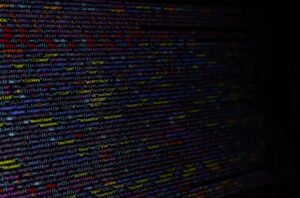What Is Deepfake in AI
Deepfakes, a portmanteau of “deep learning” and “fake,” refers to the creation of artificial intelligence (AI) generated synthetic media that convincingly alters or replaces existing images, videos, or audio recordings to depict something that never actually happened.
Key Takeaways
- Deepfakes involve the use of AI to create realistic synthetic media.
- They can alter or replace existing images, videos, or audio recordings.
- Deepfakes raise significant concerns related to privacy, misinformation, and fraud.
- They can be used for both benign and malicious purposes.
- Technologies to detect and mitigate deepfakes are being developed.
Deepfakes have gained considerable attention due to their potential to deceive and manipulate viewers into believing fabricated content. With advances in AI, including deep learning and neural networks, it has become easier to create convincing deepfakes that are difficult to distinguish from authentic media.
In recent years, deepfakes have become increasingly prevalent, circulating across various platforms, such as social media, news outlets, and video sharing websites. *This has raised concerns about the spread of misinformation and the erosion of trust in media.*
How Deepfakes Work
Deepfakes utilize machine learning algorithms and neural networks to analyze and replicate facial expressions, voices, and gestures of real individuals. By training on large datasets, deepfake algorithms can understand and mimic the patterns in the data to generate highly realistic synthetic media.
1. Deepfakes typically start with collecting a large dataset of images or videos featuring the target person, referred to as the “source.”
2. Algorithms called “generative adversarial networks” (GANs) are then used to train the AI to generate media that closely resembles the target person.
3. GANs involve two components: a generator that tries to create convincing deepfakes and a discriminator that learns to differentiate between real and fake media. Both components work together in a feedback loop to improve the quality of the generated deepfakes.
Challenges and Concerns
Deepfakes pose significant challenges and concerns, particularly in the areas of privacy, misinformation, and fraud. The ease of creating realistic deepfakes raises concerns about the authenticity and credibility of media content.
1. **Privacy**: Deepfakes can be used to fabricate compromising content of individuals, violating their privacy and potentially causing harm or embarrassment.
2. **Misinformation**: Deepfakes can be used to spread false information, making it difficult for viewers to distinguish truth from fiction, contributing to the spread of disinformation.
3. **Fraud**: Deepfakes can be used for malicious purposes, such as impersonating individuals for financial scams, political manipulation, or to incriminate innocent people.
Current Techniques to Address Deepfakes
To combat the threat posed by deepfakes, researchers and technology companies are actively developing techniques to detect and mitigate their impact.
| Technique | Description |
|---|---|
| 1. Facial and Vocal Analysis | Using AI algorithms to analyze facial and vocal cues for signs of manipulation or inconsistencies. |
| 2. Metadata Verification | Checking the metadata of media files to verify their authenticity and source. |
| 3. Blockchain Technology | Using blockchain to ensure the integrity and traceability of media content. |
In addition to these techniques, collaboration between researchers, policymakers, and technology companies is essential to develop robust and effective countermeasures against deepfakes.
Future Implications
As AI technology advances, deepfakes are likely to become even more sophisticated and indistinguishable from reality. This raises concerns about the potential misuse and manipulation of information.
The emergence of deepfakes reinforces the need for individuals to exercise critical thinking and media literacy skills to evaluate the authenticity and credibility of the content they consume. Additionally, it calls for stronger regulations and ethical guidelines to address the challenges associated with deepfake technology.

Common Misconceptions
Paragraph 1: Deepfakes are Perfectly Indistinguishable
One common misconception about deepfakes is that they are always flawless and impossible to detect. While it is true that deepfake technology has advanced significantly, there are still telltale signs that can help identify them. It is important to remember that AI-generated deepfakes may exhibit slight abnormalities, such as unusual eye movements or inconsistencies in facial expressions.
- Deepfakes are not always 100% visually convincing.
- Artifacts and distortions can appear in deepfake videos.
- Inconsistencies in audio or lip-syncing can be evidence of a deepfake.
Paragraph 2: Only Celebrities Are Targeted by Deepfakes
Another misconception is that deepfakes are primarily used to target celebrities. While high-profile individuals may indeed be victims of deepfakes due to their public visibility, anyone can potentially become a target. As the technology becomes more accessible, individuals in various fields can face the risk of being impersonated or having their image manipulated for malicious purposes.
- Deepfakes can target anyone, including ordinary people.
- Small business owners and professionals can become victims.
- Politicians and public figures are often targeted by deepfakes.
Paragraph 3: Deepfakes Exclusively Manipulate Video Content
It is often believed that deepfakes only manipulate video content, but this is not the case. Deepfakes can also manipulate images and audio recordings, leading to further deception. By altering images or modifying audio, individuals can be portrayed saying or doing things they never actually did. This demonstrates how deepfake technology poses challenges not only in video-related contexts but across various media formats.
- Deepfakes can manipulate images to create false scenes or presentations.
- Audio deepfakes can manipulate voices and create fake recordings.
- Manipulated images and audio can be used to propagate misinformation.
Paragraph 4: Deepfakes Are Always Created with Malicious Intent
Although deepfakes have gained notoriety due to their potential for harmful applications, it is important to note that they are not always created with malicious intent. Deepfake technology can also serve positive purposes, such as in the entertainment industry for special effects or creating believable CGI characters. Responsible and ethical use of deepfake technology can have legitimate applications.
- Deepfake technology can be used for artistic and creative purposes.
- Entertainment industries can leverage deepfakes for visual effects.
- Deepfakes can be utilized in educational contexts for simulations.
Paragraph 5: Deepfakes Are Impossible to Counteract
One misconception is that there are no effective ways to counteract deepfakes. While it is true that deepfake detection and mitigation pose challenges, researchers and technology experts are making progress in developing tools to detect and combat deepfake content. Improved algorithms and advanced forensic techniques are being developed to help identify and reveal deepfakes, ensuring people can distinguish between genuine and manipulated media.
- Continual advancements in deepfake detection technology are being made.
- Researchers are working on algorithms to identify deepfakes.
- Various organizations are investing in anti-deepfake solutions.

Deepfake Technology
Deepfake technology, a combination of artificial intelligence (AI) and digital manipulation, has emerged as a powerful tool for creating manipulated videos and images. This technology uses machine learning algorithms to convincingly alter or replace original content, often resulting in highly realistic but misleading or deceptive visual media. The following tables provide a glimpse into the impact and prevalence of deepfake technology in various industries and domains.
1. Deepfake Videos on Social Media Platforms
Table showcasing the percentage of deepfake videos detected on popular social media platforms.
2. Deepfake-generated News Articles
Table highlighting the number of news articles published with deepfake-generated content.
3. Deepfake Impact on Political Elections
Table illustrating the influence of deepfake technology on political elections based on cases reported globally.
4. Deepfake-generated Pornography
Table showing the prevalence and impact of deepfake-generated explicit content on online platforms.
5. Deepfake in the Entertainment Industry
Table outlining the utilization of deepfake technology in creating realistic visual effects and character replacements in movies.
6. Deepfake Applications in Crime Investigation
Table displaying the successful implementation of deepfake technology in aiding criminal investigations.
7. Deepfake Threats to Personal Privacy
Table showcasing the instances and consequences of personal privacy breaches due to deepfake technology.
8. Deepfake Detection Algorithms
Table summarizing the accuracy and efficiency of various deepfake detection algorithms.
9. Deepfakes and Online Identity Fraud
Table presenting statistics on deepfake-generated identity fraud cases reported worldwide.
10. Deepfake Applications in Medical Simulation
Table demonstrating the use of deepfake technology for training medical students and professionals in simulated scenarios.
In conclusion, deepfake technology poses significant challenges and opportunities across multiple sectors. While it offers exciting possibilities for creative expression and innovative solutions, the potential misuse of this technology raises concerns about trust, privacy, and ethical implications. As deepfake technology continues to advance, it is crucial to invest in robust detection methods and raise awareness about the risks it entails.
What Is Deepfake in AI
Frequently Asked Questions
-
What is a deepfake?
-
Deepfake refers to a technique that utilizes artificial intelligence (AI) to create or manipulate digital content, especially videos, making it appear as if someone said or did something they never did. It involves replacing or overlaying the face and voice of a person in an existing video with the face and voice of another person.
-
How are deepfakes created?
-
Deepfakes are created using AI algorithms and techniques such as deep learning and generative adversarial networks (GANs). These algorithms analyze and learn from a large dataset of images and videos to generate new content that resembles the person being manipulated in the video.
-
What are the main concerns about deepfakes?
-
One of the main concerns about deepfakes is the potential for misuse, such as spreading fake news, unauthorized use of someone’s likeness, harassment, and blackmail. Deepfakes can also be misleading and undermine trust in visual media. Additionally, they can have privacy implications and be challenging to detect and mitigate.
-
How can deepfakes be detected or authenticated?
-
Detecting deepfakes can be challenging as the technology used to create them becomes more sophisticated. However, various methods are being developed to detect deepfakes, including analyzing facial inconsistencies, examining metadata, and using AI-driven tools specifically designed for deepfake detection and authentication.
-
Are there any legitimate uses for deepfake technology?
-
While deepfake technology is often associated with negative implications, it does have potential legitimate uses. For example, it can be used in the entertainment industry for special effects and CGI, improving visual effects in movies, or enhancing virtual reality experiences. It can also have applications in research and development of AI algorithms.
-
What steps are being taken to address the challenges posed by deepfakes?
-
Researchers, tech companies, and policymakers are actively working to address the challenges posed by deepfakes. This includes developing advanced detection and authentication methods, raising awareness about deepfakes, promoting media literacy, implementing stricter regulations against malicious uses, and fostering collaborations to tackle the complex interdisciplinary nature of the problem.
-
Can deepfakes be used for political manipulation?
-
Yes, deepfakes can potentially be used for political manipulation. They can be employed to create false videos or speeches of political figures, which can then be circulated during elections to deceive voters, spread misinformation, or discredit opponents. Political deepfakes raise concerns about the integrity of democratic processes and the potential for undermining trust in political institutions.
-
Are there any legal consequences for creating or distributing deepfakes?
-
The legal consequences for creating or distributing deepfakes vary by jurisdiction. In some countries, deepfakes may violate laws related to defamation, privacy, copyright, or identity theft. However, legislation is still catching up with this emerging technology, and there might be gaps in existing laws that need to be addressed to tackle the challenges posed by deepfakes effectively.
-
Can deepfake technology be used to improve AI research?
-
Deepfake technology can have positive implications for AI research and development. It provides a challenging problem space for researchers to improve detection models, develop more robust AI algorithms, and enhance AI-driven tools for content authentication. By addressing the challenges posed by deepfakes, researchers can contribute to the advancement of AI technologies and protect against potential misuse.
-
What can individuals do to protect themselves from the risks associated with deepfakes?
-
Individuals can take several steps to protect themselves from the risks associated with deepfakes. These include being skeptical of videos and images circulating online, verifying the authenticity of content from trusted sources, using reputable AI-driven tools for content verification, staying informed about new developments in deepfake technology, and advocating for media literacy and responsible online behavior.




